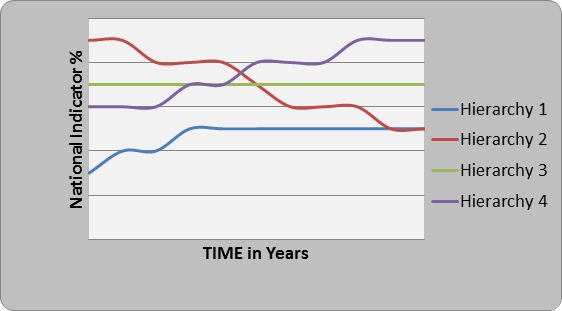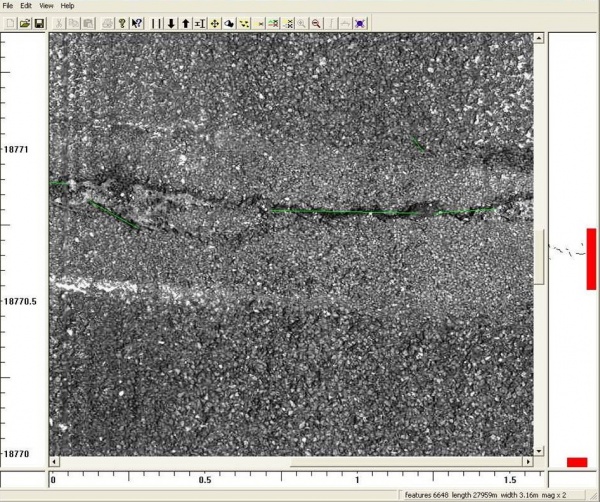Asset Management
W.D.M. Limited has worked for many years in Australia and New Zealand, giving the Consultancy team invaluable insight into the experience gained by those countries, which is now generally accepted as setting the benchmark for highway and road condition assessment and monitoring. The Company has also been successful in attracting experienced infrastructure asset management engineers from this area to join them in the UK.
The Consultancy team supplies expert advice and support for the development and implementation of Highway Asset Management Plans. The team uses condition and inventory data to support the introduction of:
- Lists of work required in priority order
- Life cycle plans for all assets
- Whole of life cycle cost optimisation
- Asset valuation based on the CIPFA Code as well as more imaginative approaches involving modelling real deterioration rates and maintenance strategies
- Financial modelling to assess the consequence of changes in funding on service delivery
Asset Valuation
Asset valuation is becoming more important as a result of the HM Treasury requirement that Local Authorities report highway infrastructure accounting data and make the depreciated replacement cost available. The Consultancy section has provided Gross Replacement Cost (GRC) and Depreciated Replacement Costs (DRC) for the carriageway highway and road assets using the CIPFA guidance, to numerous clients.
This includes working with the customer to establish:
- Appropriate weighting sets
- Time when deterioration will commence (TINI)
- Time when the pavements need replacing (TTUL) and
- Renewal unit rates
Whole of Life Cycle Cost Optimisation
The comparison of initial costs alone when selecting a treatment is not satisfactory, as the treatment with the least expensive initial cost may require more frequent maintenance, which could result in a higher overall cost in the longer term.
It is important, therefore, that the whole of life costs are taken into account when selecting treatments. This can include direct costs, as well as indirect costs such as delays at roadworks etc.
WDM® has developed a whole of life cost model to evaluate the Net Present Value for selected treatment options and maintenance scenarios over a period of up to 30 years, using standard traffic growth and discount rates.
If a scheme is delayed, the model will apply Routine Maintenance costs to maintain the scheme sections at a safe level. The model also uses QUADRO Tables to calculate delay costs at roadworks. The model is flexible so the user can decide the actual treatments that will be applied and the condition is “reset” to reflect these treatments.
Financial Modelling
The allocation of funds between different classes or hierarchies can be difficult to optimise. The financial models that WDM® have developed are ideal for carrying out this type of analysis. The effect on the condition for each road hierarchy for each funding strategy is immediately apparent over 10 or more years. This provides the opportunity to allocate funds between hierarchies in an objective manner to meet targets in a strategic way.
This is particularly important when there are insufficient funds to enable the condition of the network to be maintained in its current condition so a strategy of “managed decline” has to be implemented.
WDM® has developed some additional procedures for infrastructure asset valuation using parameters such as age, design life and condition data to estimate the value and also incorporating the principle of renewable and non-renewable assets.
The chart below shows the effect of budget allocations on the National Indicator (NI) over a 10 year period for four hierarchies.
National Indicator versus Time for Different Budget Allocations

In this illustration, funds have been allocated to allow an increase in the NI (deterioration) for the hierarchy 1 roads for the first three years and the budget is increased to enable the NI to be held steady. Funds have been allocated to the hierarchy 2 roads to improve the condition over the 10 year period, whereas the hierarchy 3 roads have been held at steady state for the whole 10 years. The funds allocated for the hierarchy 4 roads are insufficient to maintain the condition and the NI has been allowed to increase over the 10-year period.
The models used have been validated by comparing predictions of conditions, based on data from four-year-old survey data, after allowing for maintenance works undertaken, with actual conditions from a new survey. This modelling allows different maintenance strategies to be evaluated and presented to those allocating budgets so the implications of their decisions are clear.
Useful links: Highways Maintenance Efficiency Programme
Life Cycle Plans
Life cycle plans are developed initially by scheme identification, based on current condition measurements. This involves prioritising the schemes to produce a programme against expected budget, and deteriorating the conditions of schemes deferred from the current year. This ensures treatments and costs are updated and scheme lists are produced for the medium term.
A strength of the procedure is that local weighting sets can be applied to more closely align treatments to defects and forms of deterioration common to local conditions and local priorities. The treatments selected can be enhanced by using whole of life cost models. For more strategic routes, plans for maintaining and upgrading can be route based to avoid conflict and to ease congestion.







